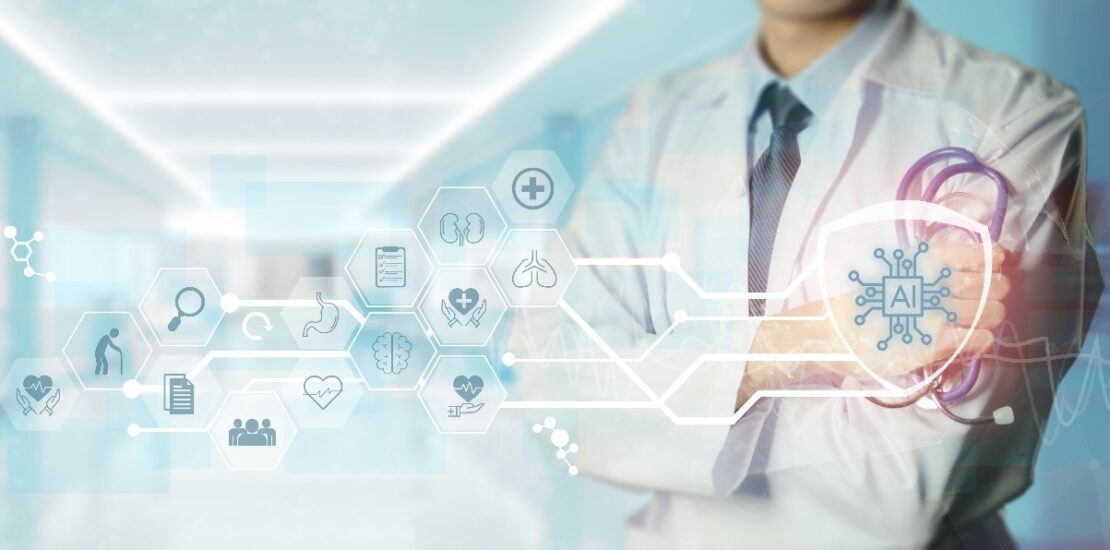- January 19, 2024
- Posted by: GMAS Team
- Category: Blog

In the dynamic landscape of healthcare, data plays a pivotal role in driving innovation, research, and personalized patient care. However, the sensitive nature of health information necessitates a careful balance between utilizing data for advancements and safeguarding patient privacy. De-identified data emerges as a powerful solution to this conundrum, offering a way to extract valuable insights without compromising individual identities.
What is De-Identified Data?
De-identified data refers to health information that has undergone a meticulous process to remove personally identifiable details, such as names, addresses, and social security numbers. The objective is to transform raw patient data into a form that protects individual identities while retaining its utility for research, analysis, and decision-making.
The De-Identification Process:
Data Analysis: Once de-identified, the transformed healthcare data becomes an invaluable resource for in-depth analysis. Utilizing advanced analytics and machine learning algorithms, researchers and healthcare professionals can extract meaningful insights, identify correlations, and uncover hidden patterns that contribute to evidence-based decision-making, ultimately driving further advancements in patient care and medical research.
Data Stripping: The first step involves removing direct identifiers like names, addresses, and contact information from the dataset. This ensures that individual patients cannot be directly identified through the data.
- Anonymization: Anonymization takes the process a step further by eliminating indirect identifiers such as dates of birth, zip codes, and other details that could potentially identify individuals when combined.
- Generalization: Generalization involves replacing particular values with more expansive or inclusive categories. For example, age ranges or geographic regions may replace precise age or location data, further reducing the risk of identification.
- Randomization: To enhance privacy, certain data elements can be randomized or perturbed. This adds an extra layer of protection against re-identification attempts
- Aggregation: Aggregation involves combining data points to create summaries or averages. This process helps to maintain the overall trends and patterns within the data while obscuring specific individual details.

Understanding the Utility of De-Identified Data in Healthcare:
- Research and Epidemiology: It is a goldmine for researchers and epidemiologists. It allows them to analyze large datasets without compromising patient privacy, enabling the discovery of trends, patterns, and potential breakthroughs in various medical fields.
- Clinical Trials and Drug Development: Pharmaceutical companies can leverage de-identified data to streamline clinical trials and drug development processes. Access to diverse and extensive datasets facilitates the identification of suitable patient populations and enhances the understanding of treatment efficacy and safety.
- Population Health Management: It is instrumental in population health management, enabling healthcare providers to identify at-risk populations, design targeted interventions, and allocate resources efficiently.
- Healthcare Policy and Planning: Policymakers and healthcare planners can use it to formulate evidence-based policies, allocate budgets effectively, and address public health challenges. This data-driven approach contributes to more efficient and responsive healthcare systems.
Best Practices for Using De-Identified Data in Healthcare:
- Compliance with Regulations: Adherence to data protection regulations, such as the Health Insurance Portability and Accountability Act (HIPAA) in the United States, is paramount. Ensure that this data meets the stipulated standards to avoid legal complications.
- Robust Security Measures: Implementing robust security measures is crucial to prevent unauthorized access and protect the integrity of de-identified datasets. Encryption, access controls, and regular audits should be integral parts of the data management strategy.
- Ethical Considerations: While it safeguards individual identities, ethical considerations must be paramount. Ensuring transparency and obtaining informed consent from patients for the use of their data is essential for maintaining trust in the healthcare system.
- Continuous Evaluation and Updating: It should be subject to regular evaluation and updating to address emerging threats and maintain its effectiveness over time. This includes staying informed about advancements in re-identification techniques and adjusting strategies accordingly.
Challenges and Future Directions:
- Re-Identification Risks: Despite rigorous de-identification efforts, the risk of re-identification remains a challenge. As technology evolves, so do re-identification techniques, necessitating constant vigilance and adaptation.
- Interoperability and Standardization: Achieving interoperability and standardization across diverse healthcare systems is a complex task. Efforts to establish common data formats and protocols are essential to maximize the utility of this data.
- Data Sharing and Collaboration: Encouraging data sharing and collaboration among healthcare institutions is crucial for harnessing the full potential of this data. Overcoming barriers related to data ownership and collaboration incentives will be vital for fostering a culture of shared knowledge.
De-identified data stands as a cornerstone for advancing healthcare research, innovation, and patient care while preserving individual privacy. By understanding the de-identification process, recognizing its utility, and implementing best practices, the healthcare industry can navigate the delicate balance between data-driven progress and ethical considerations. As technology continues to reshape the healthcare landscape, the responsible and ethical use of this data holds the key to unlocking new frontiers in medical knowledge and improving health outcomes for individuals and communities alike.
